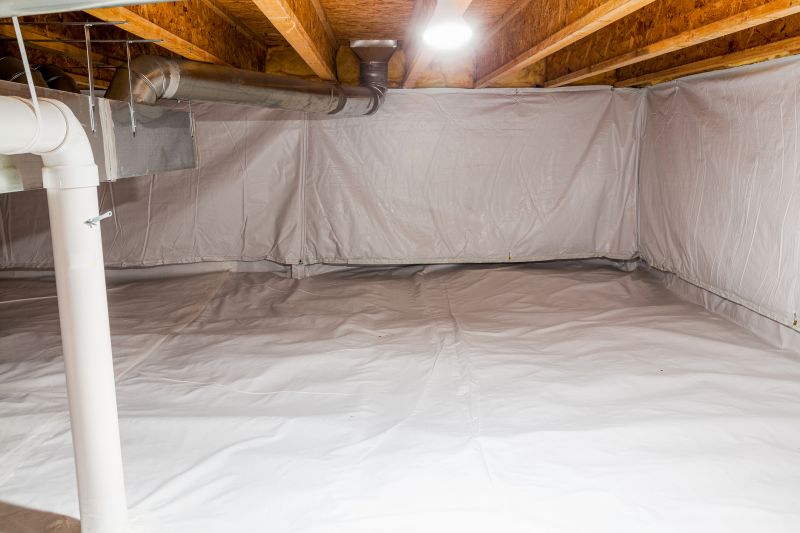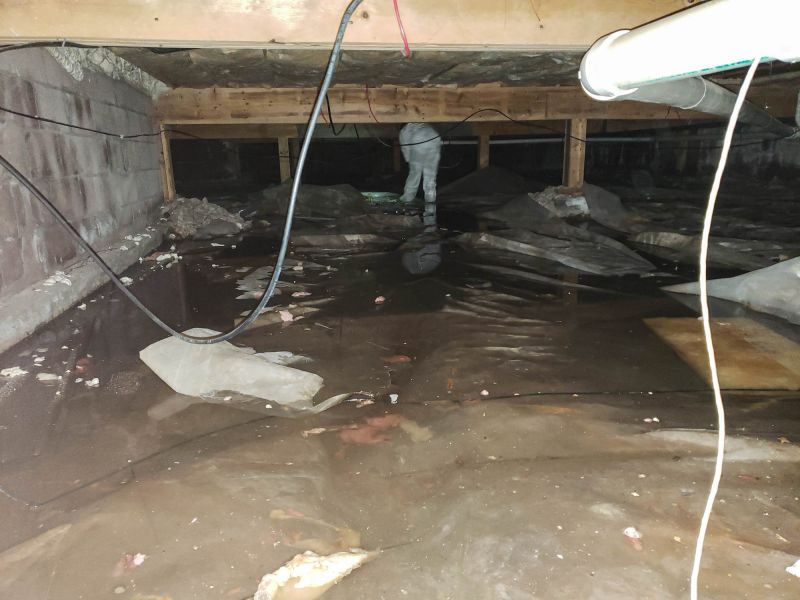Affordable Crawlspace Encapsulation Options
Crawlspace encapsulation is a comprehensive process that involves sealing and insulating the crawlspace to prevent moisture intrusion, improve air quality, and enhance home energy efficiency. Proper encapsulation can significantly reduce the risk of mold growth, wood rot, and pest infestations, contributing to a healthier living environment.
Encapsulation reduces humidity levels in the crawlspace, preventing mold development and structural damage caused by excess moisture.
A sealed crawlspace limits mold spores and dust mites from entering the living areas, promoting better indoor air quality.
Encapsulation creates a barrier that deters pests such as rodents and insects from nesting in the crawlspace.

A fully sealed and insulated crawlspace, showcasing the effectiveness of encapsulation.

Insulation installed within the encapsulated crawlspace to enhance energy efficiency.

Vapor barrier installed on the floor to prevent moisture from seeping into the home.

Preparation and sealing process during crawlspace encapsulation.
Neglecting crawlspace encapsulation can lead to serious issues such as increased energy bills, mold growth, wood rot, and pest infestations. Studies indicate that unsealed crawlspaces can contribute to up to 15% higher energy costs annually. Additionally, moisture and mold in the crawlspace can negatively impact indoor air quality, leading to respiratory problems and allergic reactions.
| Dangers of Not Encapsulating | Potential Consequences |
|---|---|
| Moisture Intrusion | Mold growth, wood rot, and structural damage |
| Higher Energy Costs | Increased heating and cooling expenses |
| Pest Infestations | Rodents and insects nesting in the crawlspace |
| Poor Indoor Air Quality | Allergens and mold spores entering living spaces |
| Structural Damage | Foundation issues and compromised support |
| Health Risks | Respiratory problems and allergic reactions |
| Decreased Home Value | Potential damage leading to lower appraisal values |

